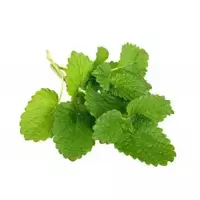Medicinal balm

The perennial medicinal balm plant is classified as an ether-oil species of the genus Melissa and the Yasntkovy family. Medicinal balm has been known to humanity for more than 2, 000 years. People have been using the useful and medicinal properties of balm since ancient Greece. The ancient Greek thinker and philosopher Theophrastus, together with another luminary of the same time, Aristotle organized the first botanical garden in which he selected and studied plants.
Theophrastus became the first botanist to discover and describe the properties of balm in his fundamental work entitled Historia plantarum. The scientific name of the plant sounds like Melissa officinalis, which in Latin means "medicinal" emphasizes the importance of the chemical composition of balm, as a healing plant. Often, melissa is compared to mint and even called "lemon mint. " This is fundamentally not a true statement, since balm not only belongs to another genus of plants, but also differs in flavor and aroma properties.
Composition of balm
Medicinal balm originally grew in the Mediterranean, Asia, Persia, as well as in the Black Sea regions and Africa. In the wild, mellis is found in Iran, America and the Balkans. The plant is currently cultivated in the Russian Federation and Lithuania.
In the chemical composition of balm there are such biologically active substances as essential oils containing linalool, myrcene, terpenoid, as well as geranylauetate and others. Perhaps it is the chemical composition of the plant that determines both the benefits and harms of balm. Essential oils that contain medicinal balm are actively used in medicine.
The benefits of melissa
The benefit of melissa lies in the sedative orientation of the actions of the active substances that make up the plant. Melissa essential oils are thought to have anxiolotic, antispasmodic, antiviral, antidepressant, and immunomodulatory properties. In addition, the main benefit of balm is the powerful antibacterial qualities of plant-based medicines. Medicinal balm is really good for human health.
The harms of melissa
However, as is not rare, balm has its own contraindications. For example, do not apply medications with balm to damaged skin. In this case, the damage from balm will be much more than good, because the plant is able to slow down the healing of open wounds. It is not recommended to drink tea with balm before driving a car, because the plant has a soothing and sleeping pills effect.
In cooking, balm leaves are used in fresh or dried form. Melissa honey is incredibly valuable, which is classified as the best varieties, due to its vitamin-mineral composition and excellent taste and aroma. Balm leaves combine perfectly with cheese, vegetable salads, fish, meat and game dishes. Often dried balm is seasoned with soups or sauces. However, the most widespread usage of balm is due to the ideal combination of taste and aroma of the plant and black tea. In addition to tea, melissa is added to alcoholic and non-alcoholic refreshments.
medicinal balm 49 kCal
Energy value of medicinal balm (Ratio of proteins, fats, carbohydrates - ju):
Proteins: 3.7 g (~ 15 kCal)
Fats: 0.4 g (~ 4 kCal)
Carbohydrates: 8g (~ 32kCal)
Energy ratio (bj | y): 30% | 7% | 65%
 Español
Español Français
Français Português
Português Русский
Русский 简体中文
简体中文 繁體中文
繁體中文 日本語
日本語 한국어
한국어 العربية
العربية Türkçe
Türkçe Қазақ
Қазақ Deutsch
Deutsch Italiano
Italiano Українська
Українська
